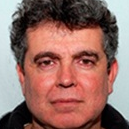Innovations–Sustainability–Modernity–Openness in Water Research
A special issue of Water (ISSN 2073-4441). This special issue belongs to the section "Wastewater Treatment and Reuse".
Deadline for manuscript submissions: closed (30 November 2019) | Viewed by 50194
Special Issue Editors
Interests: water and wastewater treatment; water and wastewater quality; water pollution monitoring; filtration; activated sludge
Special Issues, Collections and Topics in MDPI journals
Interests: energy efficiency; sustainable buildings, renewable energy sources; heating; HVAC; DHW; energy consumption
Special Issues, Collections and Topics in MDPI journals
Interests: water treatment; water used in energy production; renewable energy for application in hot domestic water and heating; activation of water by plasma technology; application of activated water
Special Issues, Collections and Topics in MDPI journals
Special Issue Information
Dear Colleagues,
This Special Issue of Water includes interesting scientific manuscripts following current research trends on:
- Drinking water quality;
- Ground and surface water quality and pollution;
- Industrial and technological water quality;
- Wastewater treatment with physical methods;
- Wastewater treatment with chemical methods;
- Wastewater treatment with biological methods;
- Natural methods usage for water and wastewater treatment;
- Biotechnology of water;
- Single processes usage for elimination of selected pollutants from water and wastewater;
- Integrated processes usage for elimination of selected pollutants from water and wastewater.
Our aim is for this Special Issue of Water to help readers to recognize the main water and wastewater problems from a scientific and technological point of view. By knowing potential water hazards and the ways to solve them, readers may understand other opinions and perspectives.
Prof. Iwona Skoczko
Assoc. Prof. Dorota Anna Krawczyk
Prof. Antonio Rodero Serrano
Guest Editors
Manuscript Submission Information
Manuscripts should be submitted online at www.mdpi.com by registering and logging in to this website. Once you are registered, click here to go to the submission form. Manuscripts can be submitted until the deadline. All submissions that pass pre-check are peer-reviewed. Accepted papers will be published continuously in the journal (as soon as accepted) and will be listed together on the special issue website. Research articles, review articles as well as short communications are invited. For planned papers, a title and short abstract (about 100 words) can be sent to the Editorial Office for announcement on this website.
Submitted manuscripts should not have been published previously, nor be under consideration for publication elsewhere (except conference proceedings papers). All manuscripts are thoroughly refereed through a single-blind peer-review process. A guide for authors and other relevant information for submission of manuscripts is available on the Instructions for Authors page. Water is an international peer-reviewed open access semimonthly journal published by MDPI.
Please visit the Instructions for Authors page before submitting a manuscript. The Article Processing Charge (APC) for publication in this open access journal is 2600 CHF (Swiss Francs). Submitted papers should be well formatted and use good English. Authors may use MDPI's English editing service prior to publication or during author revisions.
Keywords
- water and wastewater treatment
- water and wastewater quality
- water pollution monitoring
Benefits of Publishing in a Special Issue
- Ease of navigation: Grouping papers by topic helps scholars navigate broad scope journals more efficiently.
- Greater discoverability: Special Issues support the reach and impact of scientific research. Articles in Special Issues are more discoverable and cited more frequently.
- Expansion of research network: Special Issues facilitate connections among authors, fostering scientific collaborations.
- External promotion: Articles in Special Issues are often promoted through the journal's social media, increasing their visibility.
- e-Book format: Special Issues with more than 10 articles can be published as dedicated e-books, ensuring wide and rapid dissemination.
Further information on MDPI's Special Issue polices can be found here.







